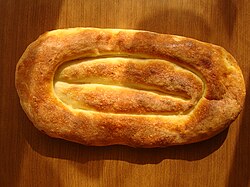This article has multiple issues. Please help improve it or discuss these issues on the talk page . (Learn how and when to remove these messages)
|

The following dishes and beverages are part of the cuisine of the Caucasus, including Armenia, Azerbaijan, Georgia and the North Caucasus.





































